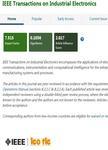版权所有:内蒙古大学图书馆 技术提供:维普资讯• 智图
内蒙古自治区呼和浩特市赛罕区大学西街235号 邮编: 010021

作者机构:Nanyang Technol Univ Sch Elect & Elect Engn Singapore 639798 Singapore Zhejiang Univ Univ Illinois Urbana Champaign Inst Hangzhou 310027 Peoples R China Aalborg Univ Dept Energy Technol DK-9220 Aalborg Denmark Zhejiang Univ Coll Elect Engn Hangzhou 310027 Peoples R China
出 版 物:《IEEE TRANSACTIONS ON INDUSTRIAL ELECTRONICS》 (IEEE Trans Ind Electron)
年 卷 期:2024年第71卷第11期
页 面:14111-14123页
核心收录:
学科分类:0808[工学-电气工程] 08[工学] 0804[工学-仪器科学与技术] 0811[工学-控制科学与工程]
基 金:China Postdoctoral Science Foundation
主 题:Artificial intelligence data-driven modeling data-light and explainable artificial intelligence (AI) dual-active-bridge converter modulation physics-in-architecture physics-informed AI
摘 要:Existing time-series data-driven approaches for converter modeling are data-intensive, uninterpretable, and lack out-of-domain extrapolation capability. Recent physics-informed modeling methods combine physics into data-driven models using loss functions, but they inherently suffer from physical inconsistency, lower modeling accuracy, and require resource-intensive retraining for new case predictions. Consequently, catering for the challenges in current data-driven and physics-informed models, this article proposes a physics-in-architecture recurrent neural network (PA-RNN) for the time-domain modeling of power converters. The proposed PA-RNN consists of a physics-in-architecture core and a data-driven core in parallel. The physics-in-architecture core rigorously integrates circuit physical laws into its customized recurrent neural architecture by leveraging numerical differentiation, while a gated recurrent unit with layer normalization serves as the data-driven core to compensate for converter behaviors not characterized by physics. The PA-RNN modeling process is explained in detail with a design case. As 1-kW hardware and comprehensive algorithm experiments have verified the superiority of PA-RNN. Overall, PA-RNN is explainable and data-light as well as possesses good domain transfer capability to assess out-of-domain scenarios without training. This article envisions to democratize artificial intelligence for the modeling of power electronics systems.